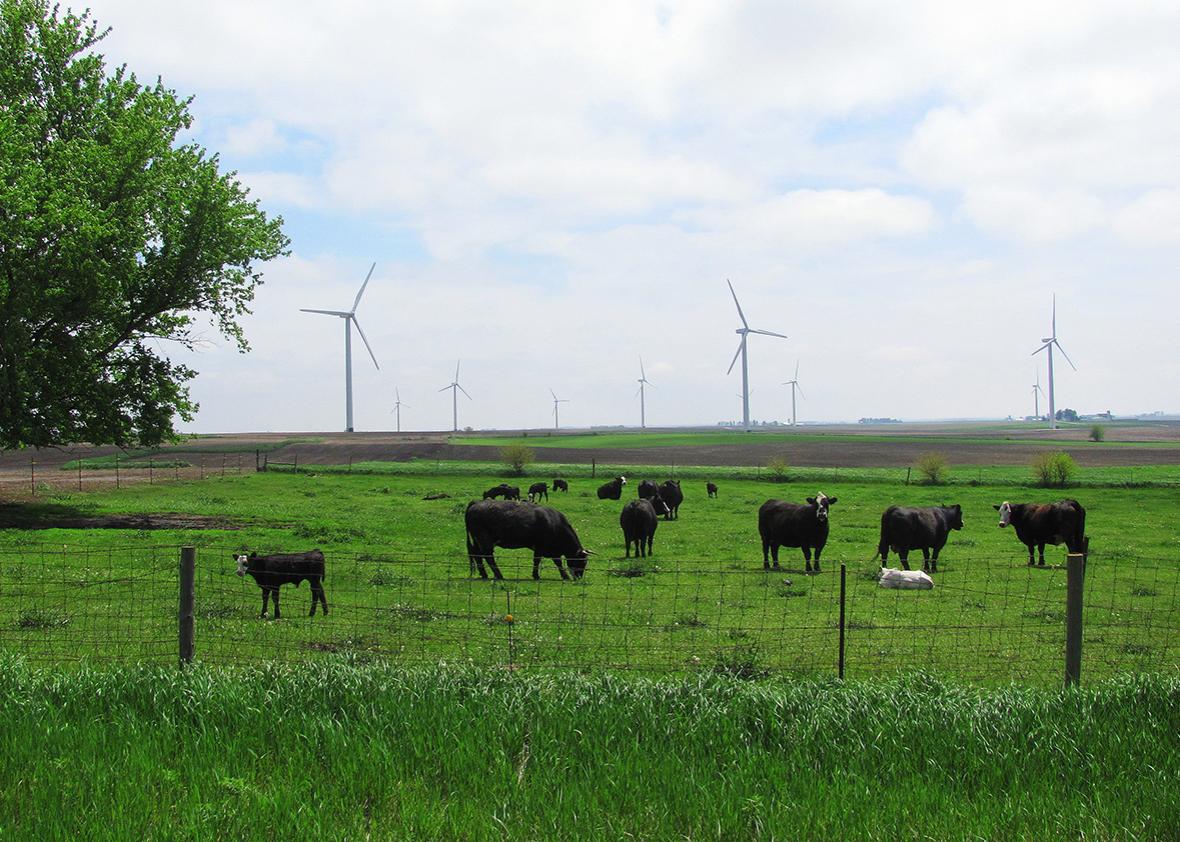In the highly public race among states trying to get the most electricity from clean and renewable sources, it’s not surprising who’s making the most noise. Hawaii—environmentally sensitive islands without access to fossil fuels—has been the most aggressive, passing a law last year that will require its utilities to get 100 percent of their electricity from renewable sources by 2045. Liberal coastal bastions led by charismatic governors aren’t far behind. In 2015 California passed a law requiring 50 percent renewables by 2030. And New York, where Gov. Andrew Cuomo has pushed hard for green initiatives, said last month that it would aim to get to 50 percent by 2030.
These goals, while laudable, are distant. Meanwhile, as is often the case, the most impressive work is happening more quietly in the middle of the country, by state bureaucrats and softer-spoken utility executives. One of the states that’s had the most success getting the most electricity from renewable sources is neither an island nor a coastal liberal bastion. It’s Iowa.
Blessed with lots of open space, consistent and strong winds, and farm owners eager to garner extra income from planting wind turbines alongside corn, Iowa has been one of the epicenters of America’s long-running wind boom. In 2008, about 4 percent of Iowa’s electricity generation came from wind. But so many wind farms have been built in the state that in 2015, according to the U.S. Energy Information Administration, “wind provided 31.3% of Iowa’s total electricity generation in 2015, a larger share than any other state.” (In the U.S. last year, wind accounted for about 4.7 percent of electricity generation.) In raw production of wind-powered electricity, Iowa is second only to Texas.
Even so, Iowa remains largely dependent on coal—which provided more than half of the state’s electricity last year. But last week, the state took another huge leap to make wind—and hence renewables—its dominant source of electricity. It did so not by setting an aspirational goal for two or three decades from now, but by OKing a big construction project. On Friday, the Iowa Utilities Board approved the proposal of Iowa-based utility MidAmerican Energy to build the Wind XI project. Under the $3.6 billion plan, MidAmerican, a unit of Warren Buffett’s Berkshire Hathaway, will erect some 1,000 2-megawatt turbines with a combined generating capacity of 2 gigawatts at several sites around the state. Portions of the project should come online next year, and it’s expected to be complete by the end of 2019. Once Wind XI is done, Iowa will harvest more than 40 percent of its electricity from wind alone.
Such leaps are possible because, as I explained earlier this year, wind power has matured and gained industrial scale more than solar or any other renewable. As time goes on, individual turbines are getting larger, the agglomerations of turbines into wind farms are sprawling over larger areas, and the transmission wires that enable wind energy to reach customers are expanding. All of which is helping to bring down the cost of wind projects. Utilities are under pressure to integrate more renewables, cut emissions, and use less coal. So as they look ahead, some of them are concluding that wind can be the predominant source of power rather than as a niche source.
But no entity has taken this line of thinking as far as MidAmerican Energy. Based in Des Moines, Iowa, the utility provides electricity to 752,000 electric customers (and natural gas to about 700,000 customers) in Iowa, Illinois, South Dakota, and Nebraska. Its service area covers about two-thirds of the Hawkeye state. Already, MidAmerican says more than 40 percent of its owned and contracted generation capacity is from renewables and noncarbon sources. That’s pretty good but still quite far from its own stated goal of reaching 100 percent renewable energy. And wind, clearly, will be the wind beneath MidAmerican’s renewable wings.
By constructing Wind XI while also adding other wind farms and phasing out coal-burning at several generating stations, the utility says it will produce 85 percent of the electricity it provides customers from wind by 2020. That easily surpasses the goals that more progressive utilities have for 2030 and beyond.
There are a few lessons we can learn from the heartland. Wind can now be added in very large gulps. At the end of last year, the total installed capacity in the U.S. was 74.4 gigawatts. So this one multisite project equals about 2.7 percent of America’s total installed capacity. More significantly, profit-seeking entities, using existing incentives and infrastructure, can ramp up renewables far in excess of the modest goals and far beyond what was thought possible even a few years ago.
This article is part of Future Tense, a collaboration among Arizona State University, New America, and Slate. Future Tense explores the ways emerging technologies affect society, policy, and culture. To read more, follow us on Twitter and sign up for our weekly newsletter.
